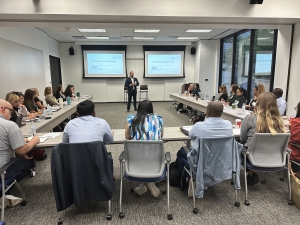Analysis by Energy Workforce SVP Government Affairs & Counsel Tim Tarpley
California has begun the process to prohibit fracking and two other drilling techniques in the state by 2024. The state’s Geologic Energy Management Division opened a public comment period for a proposed regulation that would direct CalGEM’s chief to reject new permits for three well stimulation treatments — hydraulic fracturing, acid fracturing and acid matrix operations.
Bowing to pressure from environmental groups, Gov. Gavin Newsom last month directed CalGEM to take this step. The move is expected to face legal challenges from the industry and will undermine the state’s ability meet its energy needs. In 2018, natural gas provided 46.5% of California’s electricity.
Earlier this year, Gov. Newsom issued an order banning the sale of gasoline-powered cars by 2035.
These moves by the governor are likely to exacerbate strains on the California energy markets. California currently has the highest average price for gasoline in the United States at $4.15 a gallon which is higher than Hawaii. The state currently imports more than half of its crude from abroad. The text of the regulation is below.
UPDATED WELL-STIMULATION TREATMENT REGULATIONS TEXT OF PROPOSED REGULATIONS
1780. Purpose, Scope, and Applicability, and End Date. (a) The purpose of this article is to set forth regulations governing well stimulation treatments, as defined in Section 1761(a)(1), for wells located both onshore and offshore. (b) Well stimulation treatments are not subsurface injection or disposal projects and are not subject to Sections 1724.6 through 1724.10 or Sections 1748 through 1748.3. This article does not apply to underground injection projects. If well stimulation treatment is done on a well that is part of an underground injection project, then regulations regarding well stimulation treatment apply to the well stimulation treatment and regulations regarding underground injection projects apply to the underground injection project operations. (c) For purposes of this article, a well stimulation treatment commences when well stimulation fluid is pumped into the well, and ends when the well stimulation treatment equipment is disconnected from the well. (d) The Division, including the supervisor and district deputies, will not approve applications for permits to conduct well stimulation treatments after January 1, 2024. Note: Authority cited: Sections 3013 and 3160, Public Resources Code
IEA Report Detailing Challenges in Energy Transition
The International Energy Agency released a report on “The Role of Critical Minerals in Clean Energy Transitions” detailing challenges the world faces with the energy transition. Oil, natural gas and coal currently supply 84% of global energy needs.
IEA analysts wrote that while solar and wind have grown significantly in recent decades, the world needs massive increases in wind, solar and battery technologies to achieve climate goals. These energy sources require a mixture of critical minerals that must be mined and processed. According to the IEA report, the global energy transition called for by policymakers would increase demand for minerals like lithium, graphite, nickel and rare-earth metals by 4,200%, 2,500%, 1,900% and 700%, respectively, by 2040.
This radical demand increase would require vast new mining and production infrastructure. A further complication: much of these critical minerals are located in China and countries with political instability and conflict. The IEA report says the energy transition could be slower and smaller than hoped without huge investment in domestic supply from the U.S.
Technological innovations may be able to tip these numbers more favorably as time goes on. However, U.S. policymakers on both sides of the aisle are paying attention to this IEA report as they debate infrastructure investment targets, as are policymakers around the globe. It’s likely that governments and international bodies will seek to support critical mineral development, which could create opportunities for Council companies prepared to operate in this space.
The Council’s International Trade and ESG committees are working on critical minerals issues and are planning a roundtable on topic in the weeks ahead.
For more information on the Council’s advocacy efforts or to get involved, contact SVP Government Affairs & Counsel Tim Tarpley.
Tim Tarpley, SVP Government Affairs & Counsel, analyzes federal policy for the Energy Workforce & Technology Council. Click here to subscribe to the Council’s newsletter, which highlights sector-specific issues, best practices, Council activities and more.





